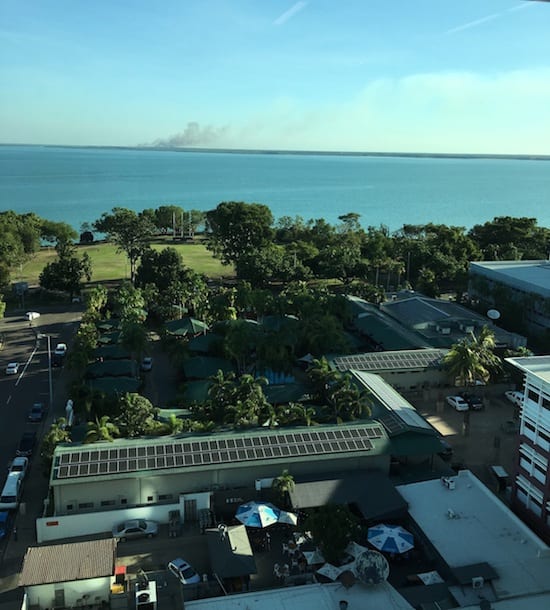
The Clean Energy Council’s recent Clean Energy Australia Report 2018 claims to provide a comprehensive overview of the Australian clean energy sector and the latest key figures and statistics on the national energy market.
Turn the page, to the map of Australia and you find the Northern Territory is missing.
While the NT accounts for only one percent of the total population, it is about one sixth of Australia’s total land mass, and it has a world class solar resource.
The NT has just celebrated 40 years of self-government and the Michael Gunner-led Labor government has a commitment to achieve 50 per cent renewable energy by 2030.
While Darwin has been behind in consumer demand, with only 11 per cent of households with rooftop solar PV, the uptake in the commercial sector has been stronger with the largest market share holder, Country Solar NT, reporting they are installing a 100kW system a week and with another 2MW on the books.
It is common to see solar PV in car parks, commercial premises and on pubs. Darwin is starting to see multi-tenancy use of solar PV – on apartment blocks and on shopping centres – and with an opportunity for peer to peer and landlord tenant trading.
Over and above the two already completed iconic Darwin Solar PV projects of:
- The GPT Group’s 1.25 MW rooftop solar PV on Casuarina Square shopping Centre; and
- Darwin International Airport’s 4MW of ground mounted solar PV.
There been an impressive list of announcements, proposed for connection on the Darwin Katherine Grid, the largest of the 3 regulated grids in the NT, and anticipated completion in 2018-19:
- Epuron are in pre-construction phase of a 25MW Solar PV plant at Katherine.
- The Australian Defence Force have tendered or a 3MW Solar PV system at RAAF Base Darwin and 9MW at Robertson Barracks.
- Rim Fire Energy Retail’s 10MW solar PV plant at Batchelor.
- Two Infigen Energy Solar PV plants, 12MW at Manton Dam and 10MW at Batchelor.
City of Darwin has approved their Energy Strategy including about 5MW of solar PV including a large system at the Shoal Bay landfill facility.
This is over 75MW of solar PV and additional to the 2016 estimate of 10MW of solar PV installed on the Darwin Katherine grid which has only a 300MW peak demand and 1600 GWh annual demand.
In 2016, Alice Springs grid experienced the highest solar generation contribution of any grid in Australia, with an estimated 10.6MW capacity and around 40 per cent of 220 GWh average annual demand.
Alice Springs participated in the Solar Cities program and 20 per cent of households opted for solar PV by 2013. Annual growth in Alice Springs’ maximum demand is 0.3 % and met by growth in solar PV generation of 10.8 %.
Alice Springs, with aspirations to be the World Largest Solar Centre has been modelled to be able to support 80 per cent renewable energy generation.
In 2017, Epuron’s Uterne (meaning a bright sunny day in the local Arrente language) solar PV Power plant was expanded to 4MW.
In July 2018, Territory Generation will be commissioning a 5 MW Battery Energy Storage System in Alice Springs enabling greater solar PV penetration.
A community led initiative “Repower Alice Springs” has big ambitions with 10MW community owned energy project.
The Territory has had interim NT Electricity Market status since 2015 and with network regulatory functions transferred to the AER. The full NTEM expected to take the form of a capacity plus energy market.
Meanwhile, the transition issues are being felt, particularly for the Government Owned Corporation, “Territory Generation” and through the loss of 25% of the day time load to privately owned solar generators.
The Territory has its fair share of challenges but also opportunities for innovative energy policy, market design and diesel displacement in remote communities.
Here are just a few more reasons to put NT back on the map.
References
- Clean Energy Australia Report.
- Utilities Commission, Power System Review 2015-16
- Australia PV Institute
- Infigen website, accessed 03 JUL 2018
- Epuron website, accessed 03 JUL 2018










